The Central Amazon fisheries region extends along the Amazon River from the Japurá River in the west to the mouth of the Madeira River in the east. This region has historically been exploited intensely, mainly by the commercial fishing fleet from Manaus. Its total potential catch is estimated to be 51,000 tons.
The confluence of the Japurá River and Amazon River (Solimões) forms an extensive floodplain area, which is now in part protected by the Mamirauá Sustainable Development Reserve. The Mamirauá Reserve is the upper limit of an extensive floodplain system that includes the lower courses of the Juruá, Purus, Negro and Madeira rivers. The turbid Juruá and Purus rivers are the largest southern tributaries of the Amazon River within the Central Amazon fisheires region. Near the confluence of the Amazon (Solimões) and Negro rivers is Careiro, the largest floodplain island of the Central Amazon.
Fisheries data are available for eight cities located in the Central Amazon region and all of them are in the state of Amazonas, Brazil. With more than 2 million people, the Central Amazon is the most heavily populated fisheries region in the Amazon Basin. Manaus claims 1.4 million inhabitants of this region. Boats from Manaus and several nearby cities account for approximately 68% of the total catch of 32,000 tons of the Central Amazon. Manaus fishermen are considered the most experienced in the region and rely heavily on gill nets in floodplain environments and purse seines in river channels. The geographical range of Manaus fishermen largely defines the Central Amazon fisheries region.
Iranduba is a small city of about 32,000 people on the Amazon River (Solimões), but it has been the second most important fishing port of the region and accounts for approximately 11% of the total potential catch of the Central Amazon. The disproportionate importance of the Iranduba fishing port is due to a large refrigeration company in the city that has bought and processed large quantities of fish, especially catfish, for national and international markets.
Parintins (90,000 inhabitants) and Manacapuru (73,000 inhabitants) are the second and third largest cities of the state of Amazonas. They have public fishing ports that receive about 6% and 5% of the total catch of the region. Parintins is located at the confluence of the Amazon and Madeira rivers and Manacapuru is located along the Amazon (Solimões) River. Itacoatiara, Tefé, Coari and Alvarães are smaller cities with 12,000 to 72,000 inhabitants and individually account for only 2% to 5% of the total catch of the Central Amazon.
Estimates of fish yield by fishing areas and species are based on landings in the public market of Manaus. Six important fishery areas are recognized: Solimões-Japurá; upper Solimões; Amazon River-Lower Purus; Lower Juruá; Lower Madeira; and Lower Negro. The relative importance of these fishing areas changed from 1976-1978 and 1994-1996, the two periods that were intensively investigated. Historically, the most important fishing areas of the Central Amazon have been the Solimões-Japurá and Lower Purus. These two areas accounted for more than half of the total catches of the Central Amazon.
In the 1970s the Amazon River, Lower Juruá, Lower Madeira and Lower Negro fishing areas yielded approximately one-fifth of the total Central Amazon catch, but this increased to more than one-third in the 1990s. At the same time the yields of the other fishing areas decreased from 26% to 7% of the total. This change is an indication that the fishing fleet of Manaus is targeting the Solimões-Japurá and Lower Purus zones.
More than 90% of the total Central Amazon region catch consists of migratory species. Characins represent 90% of the total migratory fish catch and catfish make up the other 10%. Jaraqui, tambaqui and curimatã are the most important food fishes in the Central Amazon and they alone account for more than half of the total catch. Most jaraqui are captured in the Negro River with seines when large schools are migrating downstream to spawn or disperse. In terms of price per kilo wild large tambaqui are now the most valuable fish in the Manaus market. It is captured with gill nets in flooded forests or with seines in river channels when it is migrating. Most tambaqui, however, now consist of young fish less than 60 cm in length and most large individuals are captured hundreds of kilometers from Manaus since local stocks of adults have been depleted. Large tambaqui are now commonly sent to Manaus on passenger ships equipped with small iceboxes and the fish are sold directly to restaurants.
Curimatã is the most important fish species exploited in the Amazon Basin, but not in the Central Amazon, where it is captured mostly in river channels and floodplains of turbid water rivers. Other important migratory species include pacu, matrinchã, aracu, sardinha and pirapitinga.
The catch composition by fishing zone of the Central Amazon was estimated using market data from the 1970s. During that period, the Solimões-Japurá fishing zone was the most important and several species were heavily exploited, especially branquinhas. Some species, however, were captured more in one Central Amazon zone than in another. For example, matrinchã and jaraqui were captured mostly in the Negro River whereas the large tambaqui and pirapitinga were taken mostly in the Juruá River. The Solimões-Japurá fishing zone catch was based mostly on eight species and tambaqui, jaraqui, and curimatã accounted for three-fourths of the total catch. Fisheries in the Lower Purus and Lower Juruá zones targeted tambaqui that represented two-thirds to four-fifths of the total catch. The Juruá was the only zone where pirapitinga was important.
Jaraqui was the most important species in the Amazon River and lower Negro fishing zones, mainly because of Manaus fishermen who specialize in migratory schools of these species. Catches were more diversified in the Amazon River fishing zone, with nine species representing more than 90% of the total catch, though jaraqui and tambaqui represented more than half of this. The fishery in the lower Negro fishing zone was specialized for jaraqui, which represented four-fifths of the total catch. Jaraqui and matrinchã represented 90% of the total catch of the Lower Negro River. In the Lower Madeira zone seven species accounted for 90% of the total catch and curimatã and jaraqui represented more than half of the total catch.
The relative importance of species captured in the Central Amazon fisheries region has changed in the last three decades. Tambaqui was the most important species in the Manaus market at the end of the 1970s, when catches were 13,000 tons; by 1982, they had declined to 2,000 tons. Since 1993, attempts have been made to counter overfishing of tambaqui, such as restrictions on seasons and areas. These restrictions, however, have generally been neither respected by fishermen nor enforced by authorities. The high value of tambaqui is now a direct consequence of depleted stocks.
Jaraqui replaced tambaqui as the most important species in the 1980s. Maximum recorded catches of jaraqui in the Central Amazon region were 13,000 tons between 1984 and 1985, at which time the species were already thought to have been overexploited. Young jaraqui were captured mostly during dispersal migrations. Fishermen have modified nets so that young fish can be removed and released alive. This new type of net, called an escolhedeira, allows young fish to escape. This improvement may be responsible for increased adult catches in recent years. Curimatã catches ranged from 1,500 to 4,700 tons and maximum exploitation limits occurred in the 1990s.
-
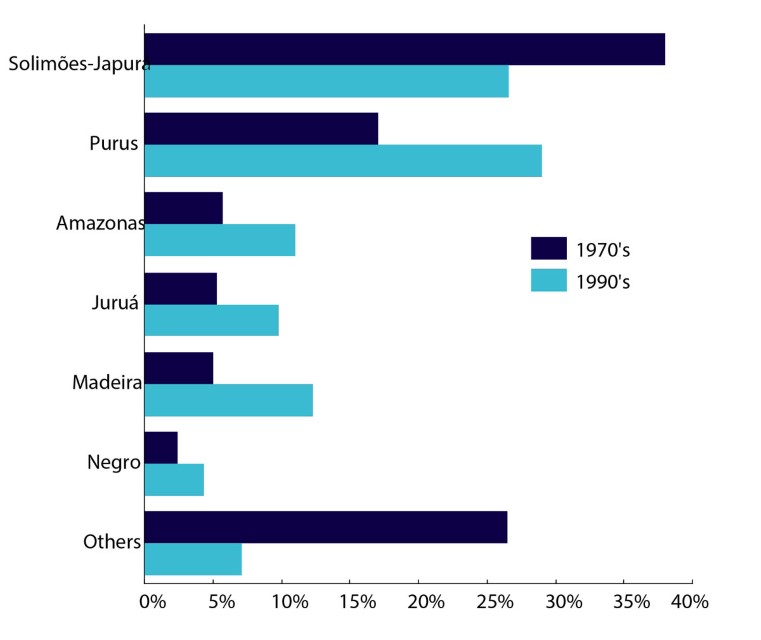
Amazonía Central 1
Central Amazon catch by fishing zones.
-
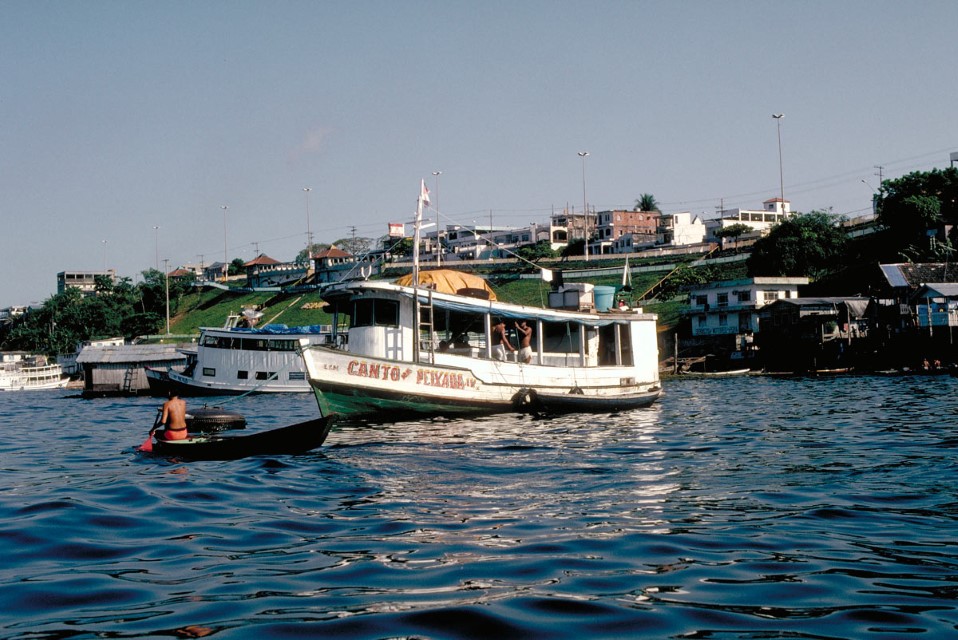
Amazonía Central 2
Photographer: Michael Goulding
-
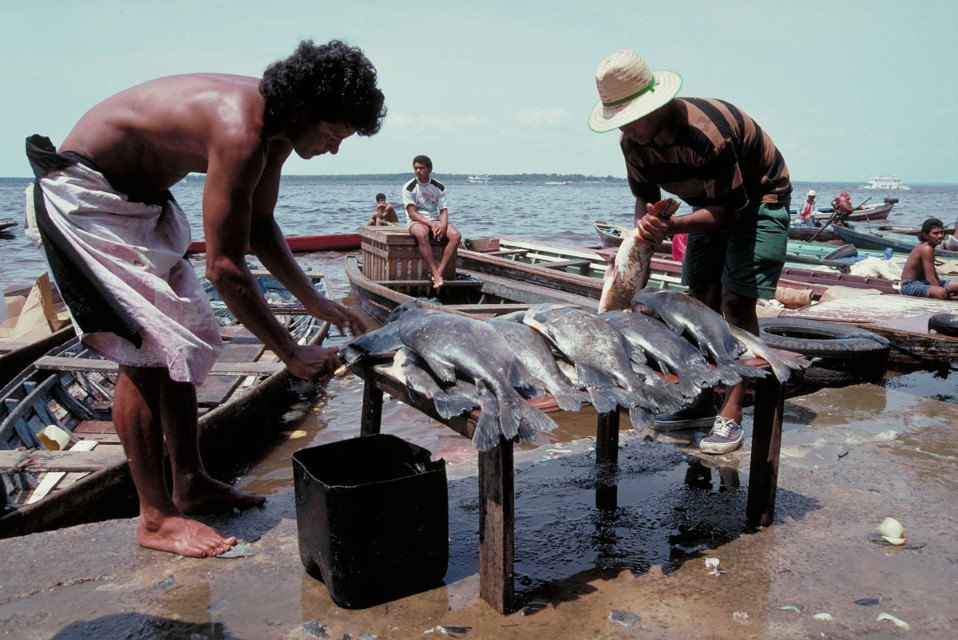
Amazonía Central 3
Photographer: Michael Goulding
-

Amazonía Central 4
Photographer: Michael Goulding
-
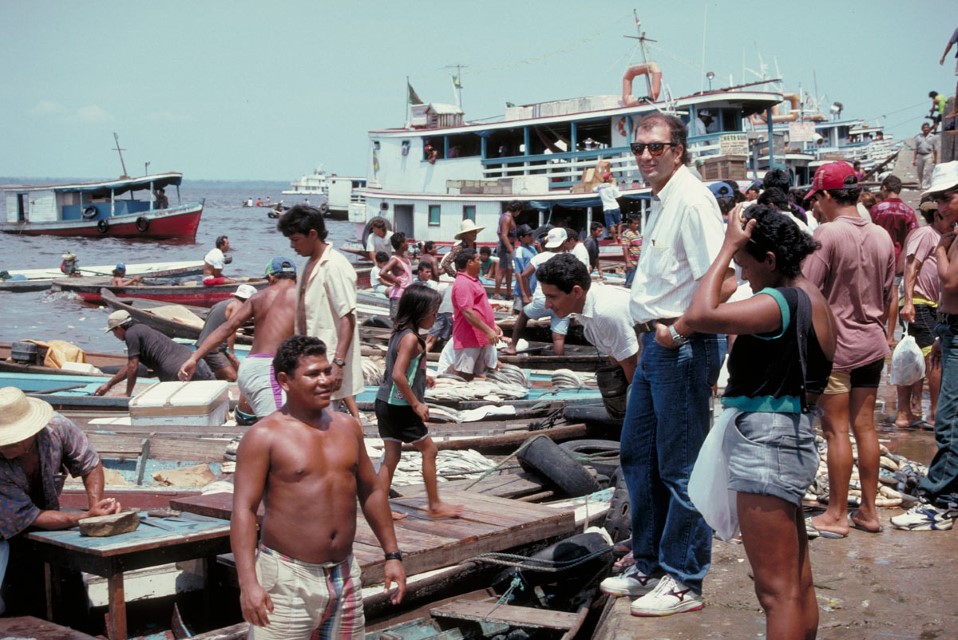
Amazonía Central 6
Photographer: Michael Goulding
-
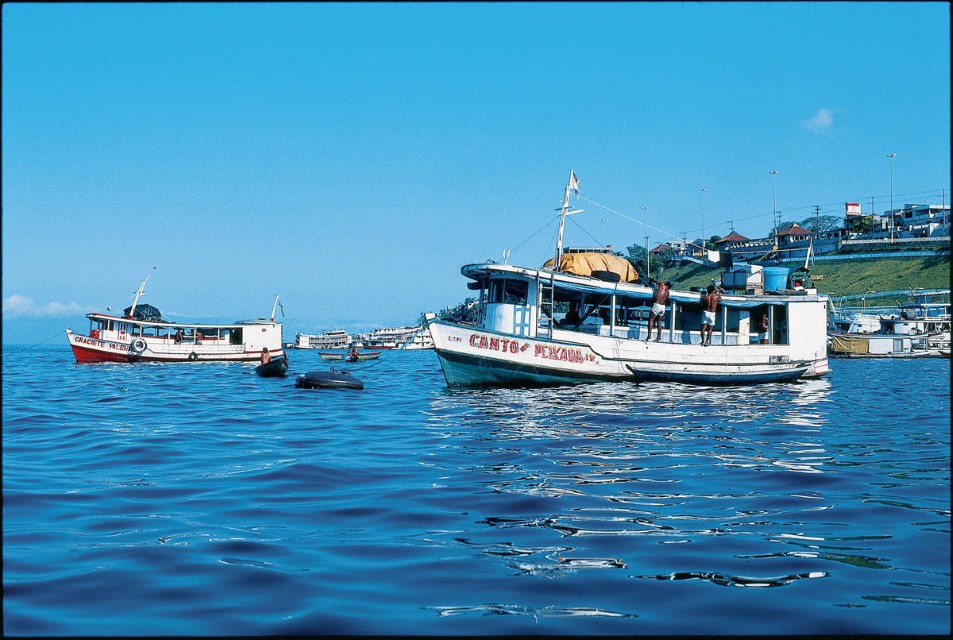
Amazonía Central 7
Typical large fishing boats of Manaus fleet. Iceboxes can hold 15-30 tons of fish. Photographer: Michael Goulding
-
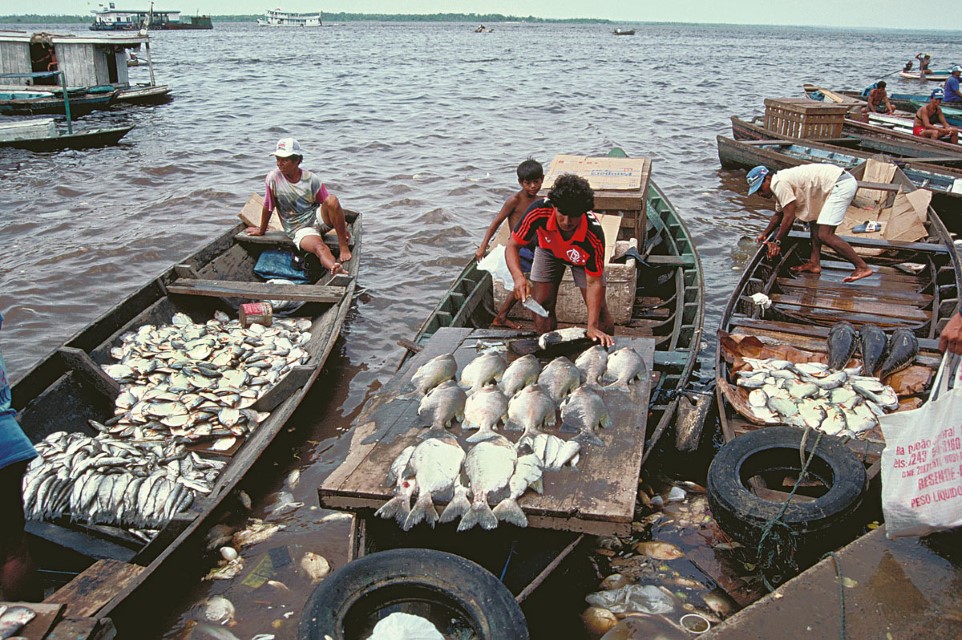
Amazonía Central 8
Fish being sold on Manaus waterfront during low water period. Catches were made the previous night. Department – Country: Amazonas – Brazil Main Basin – Sub Basin: Negro – Lower Negro Main Stem Photographer: Michael Goulding
-

Amazonía Central 9
Central Amazon annual catch of curimatã, tambaqui, and jaraqui.
REGION
Central Amazon
Bz-Co-Pe Border
Estuary
Lower Amazon
Peruvian Amazon
Juruá
Purus
Madeira
Upper Madeira
Tocantins
